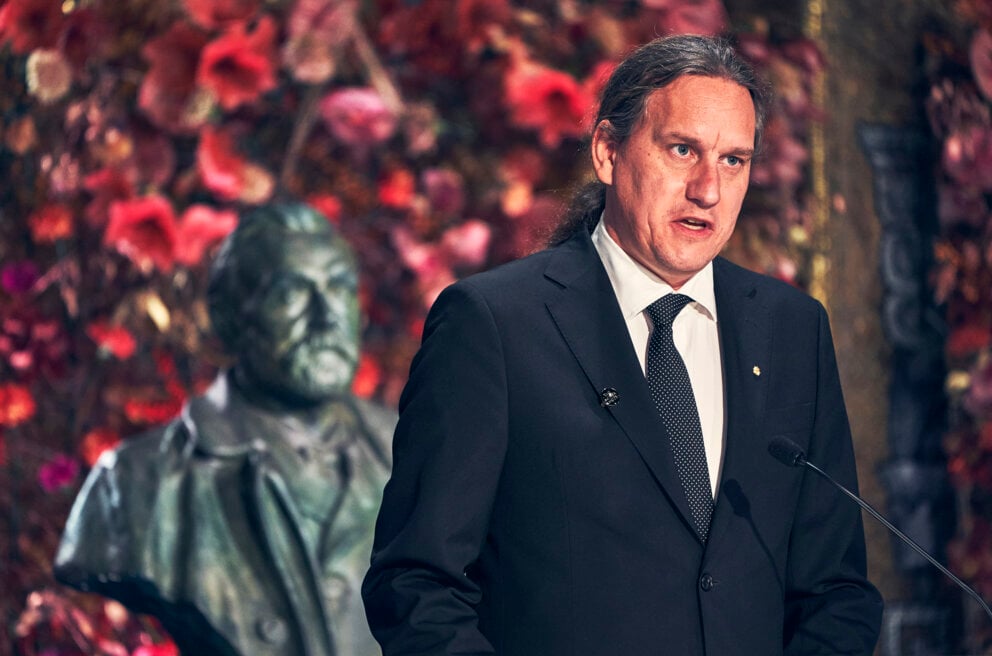Award ceremony speech

Professor Tommy Andersson delivering the presentation speech for the 2020 Prize in Economic Sciences.
© Nobel Prize Outreach. Photo: Dan Lepp
English
Swedish
Presentation Speech by Professor Tommy Andersson, Member of the Royal Swedish Academy of Sciences, Member of the Committee for the Prize in Economic Sciences in Memory of Alfred Nobel, 10 december 2020.
Your Majesties, Your Royal Highnesses, Esteemed Laureates, Ladies and Gentlemen,
Most of us have similar morning routines. We wake up, prepare our morning coffee and have something to eat. During breakfast, we scroll through social media on our cell phones and search the internet for the latest news. What we do not normally think about is that auctions influence every step of this routine.
The cost of the electricity to brew our morning coffee is determined by auctions. Which advertisements we are exposed to on the internet is decided by auctions. The price our telecom operators pay to use radio frequencies – and thus what it costs us to surf the web – was determined by an auction.
Each day, auctions transfer astronomical amounts between buyers and sellers. But their scope and size are not the only reasons for investigating how auctions work. Different sellers have different objectives, from revenue to public welfare. How should an electricity auction be designed such that we get cheap electricity today, while still making sure that there is enough long-term investment to secure future electricity supplies? How should auctions for carbon emission allowances be designed to create incentives for firms to invest in green energy?
To answer questions like these, we must understand how different auction formats shape the bidding and final prices. In the 1960s, Robert Wilson developed a theory for auctions of objects with a common value – a value which is uncertain beforehand but, in the end, is the same for all bidders. Most objects have a common value, such as the true volume of minerals in a certain area. Because it is difficult to estimate this common value, the winner of an auction may overpay and become a loser – a phenomenon known as the winner’s curse. In the 1980s, Paul Milgrom extended and generalized Wilson’s theory to include both private and common values. Thanks to the research of the Laureates, the standard auction formats are now well understood.
In the beginning of the 1990s, cell phones and the internet became part of our daily lives. As a result, the demand for radio frequencies skyrocketed. Traditional methods for allocating frequency bands to telecom operators, based on lotteries and administrative protocols, were inefficient. And, unfortunately, the standard auction formats were also inefficient.
Would it be possible to design an auction for radio frequencies that could both avoid the winner’s curse and generate revenue for the government, while also benefiting the end users as they browsed the news at their breakfast table? The first auction format to accomplish this task not only relied on the basic research conducted by Milgrom and Wilson – it was also designed by them. This auction format has now been used to allocate radio frequencies in almost 100 countries.
Dear Professors Milgrom and Wilson,
Your research has helped us understand how auctions work. Like few other economists, you have crossed disciplinary boundaries, drawing on mathematical sciences, behavioral sciences, and computer science. You have also brought theory to practice. The auction formats analyzed and designed by you and your colleagues are now used all over the world, to sell fishing quotas, carbon emission rights, financial assets, radio frequencies, and many other objects. Thanks to your research, resources are now more efficiently allocated – to the benefit of buyers, sellers, taxpayers, consumers, and society as a whole.
It is an honor and a privilege to convey to you, on behalf of the Royal Swedish Academy of Sciences, our warmest congratulations.
Copyright © The Nobel Foundation 2020
Nobel Prizes and laureates
Six prizes were awarded for achievements that have conferred the greatest benefit to humankind. The 12 laureates' work and discoveries range from proteins' structures and machine learning to fighting for a world free of nuclear weapons.
See them all presented here.
